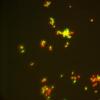
15-12-2025 11:49
 Danny Newman
Danny Newman
ITS sequences from the following two collections B

15-12-2025 07:05
 Danny Newman
Danny Newman
Pseudosclerococcum golindoi (det: Zotto)near Cosb

15-12-2025 12:34
 Danny Newman
Danny Newman
indet. Rhytismataceae on oak leafnear Purchase Roa

15-12-2025 07:09
 Danny Newman
Danny Newman
indet. Rutstroemiaceae sp. on unk. fallen leavesMc

09-12-2025 12:06
 Andgelo Mombert
Andgelo Mombert
Bonjour,Je recherche l'article concernant Hypobryo

12-12-2025 18:39
Mirek GrycHello everyone.Macrofeatures similar to Mollisia b

07-12-2025 16:07
Arnold BüschlenHallo, ich habe in einer Moos-Aufsammlung (epiphy

08-12-2025 21:04
Mark Stevens"Hello everyone,I'm relatively new to microscopy (
Sclerotinia sclerotiorum Spores adhesion
Ale Ale,
13-02-2020 16:34
Hi all,
I am working with SS spores on glass surfaces. My current problem is that they get stuck to the surface of glass very easily and they also tend to form clumps. I already tried surfactants such as Tween 20, Pluronic, PVA but I was not able to solve the problem. Any advice, tips or suggestions?.
Attached is a photo of stained spores. Thank you!
David Malloch,
13-02-2020 17:56

Re : Sclerotinia sclerotiorum Spores adhesion
I have found that the spores of many white-spored agarics, especially Mycena, stick to glass slides in small clumps and are difficult to dislodge. Usually a drop of water will cause them to rehydrate and separate, but in some situations oil (mineral oil or even olive oil) seems to work. If you wish to make single-spore isolates, it would probably be better to discharge the spores on to an agar surface.
Ale Ale,
13-02-2020 19:13
Re : Sclerotinia sclerotiorum Spores adhesion
Hi David,
Thank you for your answer. I think I should explain a bit better my problem. Currently I have the spores flowing in a microchannel with DI water, so spores are already in contact with water. The flow is generated using a micropump. Some spores get stuck to the surface of this microchannel (glass) and wont move even at high flow rates. I noticed this problem not only in glass but in surfaces such as: Aluminum, Gold, PDMS, SU-8.
Spores get stuck easily and the surfactants I mentioned before did not help.
David Malloch,
13-02-2020 19:32

Re : Sclerotinia sclerotiorum Spores adhesion
This is beyond anything I have experienced. It would seem that the spores are genetically disposed to stick firmly to any surface they encounter; not a bad strategy for a plant parasite. Perhaps the "glue" is impervious to most normal surfactants or solvents. That sounds like a challenging and interesting problem.
